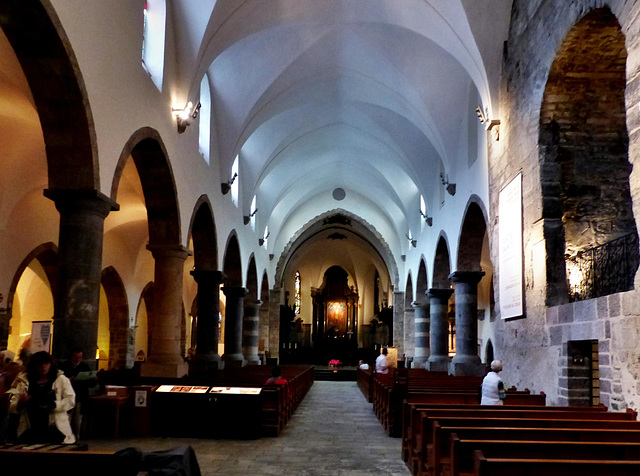Chamonix - Aiguille du Midi
Aosta - Collegiata di Sant'Orso
Aosta - Collegiata di Sant'Orso
Aosta - Collegiata di Sant'Orso
Aosta - Collegiata di Sant'Orso
Aosta - Collegiata di Sant'Orso
Aosta - Collegiata di Sant'Orso
Aosta - Collegiata di Sant'Orso
Aosta - Collegiata di Sant'Orso
Aosta - Collegiata di Sant'Orso
Aosta - Collegiata di Sant'Orso
Aosta - Collegiata di Sant'Orso
Aosta - Collegiata di Sant'Orso
Aosta - Collegiata di Sant'Orso
Aosta - Collegiata di Sant'Orso
Aosta - Collegiata di Sant'Orso
Ivrea - Duomo di Santa Maria
Ivrea - Duomo di Santa Maria
Ivrea - Duomo di Santa Maria
Ivrea - Duomo di Santa Maria
Ivrea - Duomo di Santa Maria
Ivrea - Duomo di Santa Maria
Ivrea - Duomo di Santa Maria
Saint-Maurice - Abbaye de Saint-Maurice
Sion / Sitten
Naters - St. Mauritius
Naters - St. Mauritius
Naters - St. Mauritius
Muttenz - St. Arbogast
Muttenz - St. Arbogast
Muttenz - St. Arbogast
Muttenz - St. Arbogast
Metz - Saint-Pierre-aux-Nonnains
Metz - Saint-Pierre-aux-Nonnains
Metz - Saint-Pierre-aux-Nonnains
Metz - Chapelle des Templiers
Metz - Chapelle des Templiers
Metz - Chapelle des Templiers
Saint-Mihiel - Salon de Coiffure
Saint-Mihiel - Saint-Étienne
Saint-Mihiel - Saint-Étienne
Saint-Mihiel - Saint-Étienne
Saint-Mihiel - Saint-Étienne
Saint-Mihiel - Saint-Michael
Ceffonds - Saint-Remi
Location
See also...
Keywords
Authorizations, license
-
Visible by: Everyone -
All rights reserved
-
152 visits
Saint-Maurice - Abbaye de Saint-Maurice


As this place has a strategic value securing the road to the upper part of the Rhône valley, that continued from there on via the St. Bernard Pass to Italy, a Roman outpost named Agaunum existed here.
The best known Roman legion ever been here, was the Theban Legion, that later got known as the "Martyrs of Agaunum".
Following a stiry written down by afflatus of Eucherius, Bishop of Lyon, around 430, the Legion was commanded by Maurice (Mauritius), Candidus, Innocent and Exuperius. Since the Legion had refused to sacrifice to the Emperor Diocletian orders were given to "decimate" the legion by putting to death a tenth of its men. This act was repeated until none were left.
Bodies identified as the "martyrs of Agaunum" had been discovered here and a basilica was built in their honor. An abbey was founded in the early 6th century on land donated by King Sigismund of Burgundy.
This was a very popular place for pilgrims until Otto I ("Otto the Great") in 961 "translated" the relics of Saint Maurice to Magdeburg, where Otto founded a bishopric soon after. The relics still are in the Magdeburg Cathedral, near the tomb of Otto I and his wife Eadgyth.
The abbey survived the loss - and is still existing. With a history of 1500 years it may be the oldest existing convent in mid Europe.
As the abbey´s church was built under a cliff, the building got frequently damaged by rockfalls, the last of such events happed in 1942 and damaged the tower. Most, what is seen today, dates to the 17th and early 18th century.
The best known Roman legion ever been here, was the Theban Legion, that later got known as the "Martyrs of Agaunum".
Following a stiry written down by afflatus of Eucherius, Bishop of Lyon, around 430, the Legion was commanded by Maurice (Mauritius), Candidus, Innocent and Exuperius. Since the Legion had refused to sacrifice to the Emperor Diocletian orders were given to "decimate" the legion by putting to death a tenth of its men. This act was repeated until none were left.
Bodies identified as the "martyrs of Agaunum" had been discovered here and a basilica was built in their honor. An abbey was founded in the early 6th century on land donated by King Sigismund of Burgundy.
This was a very popular place for pilgrims until Otto I ("Otto the Great") in 961 "translated" the relics of Saint Maurice to Magdeburg, where Otto founded a bishopric soon after. The relics still are in the Magdeburg Cathedral, near the tomb of Otto I and his wife Eadgyth.
The abbey survived the loss - and is still existing. With a history of 1500 years it may be the oldest existing convent in mid Europe.
As the abbey´s church was built under a cliff, the building got frequently damaged by rockfalls, the last of such events happed in 1942 and damaged the tower. Most, what is seen today, dates to the 17th and early 18th century.
- Keyboard shortcuts:
Jump to top
RSS feed- Latest comments - Subscribe to the comment feeds of this photo
- ipernity © 2007-2024
- Help & Contact
|
Club news
|
About ipernity
|
History |
ipernity Club & Prices |
Guide of good conduct
Donate | Group guidelines | Privacy policy | Terms of use | Statutes | In memoria -
Facebook
Twitter

Sign-in to write a comment.